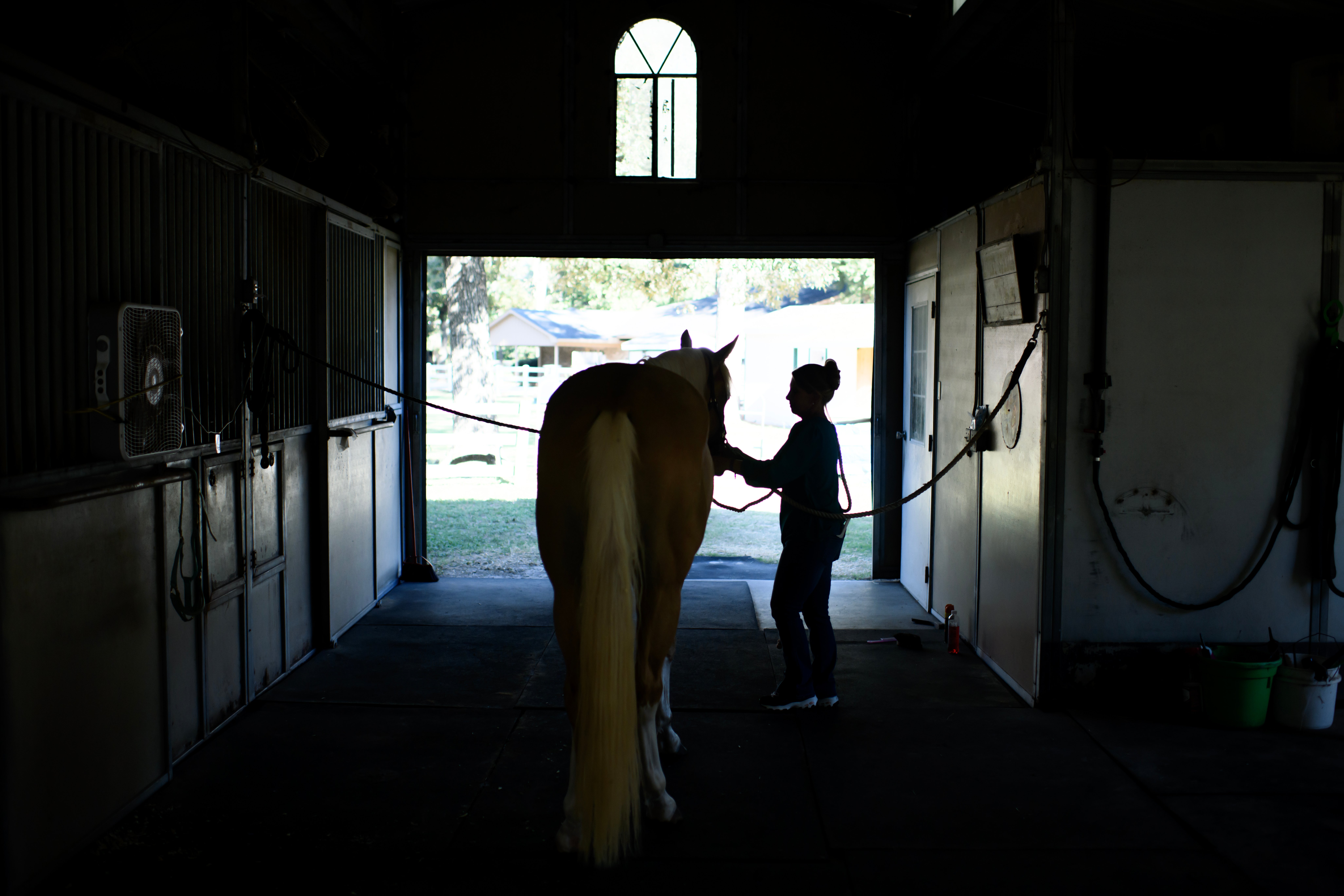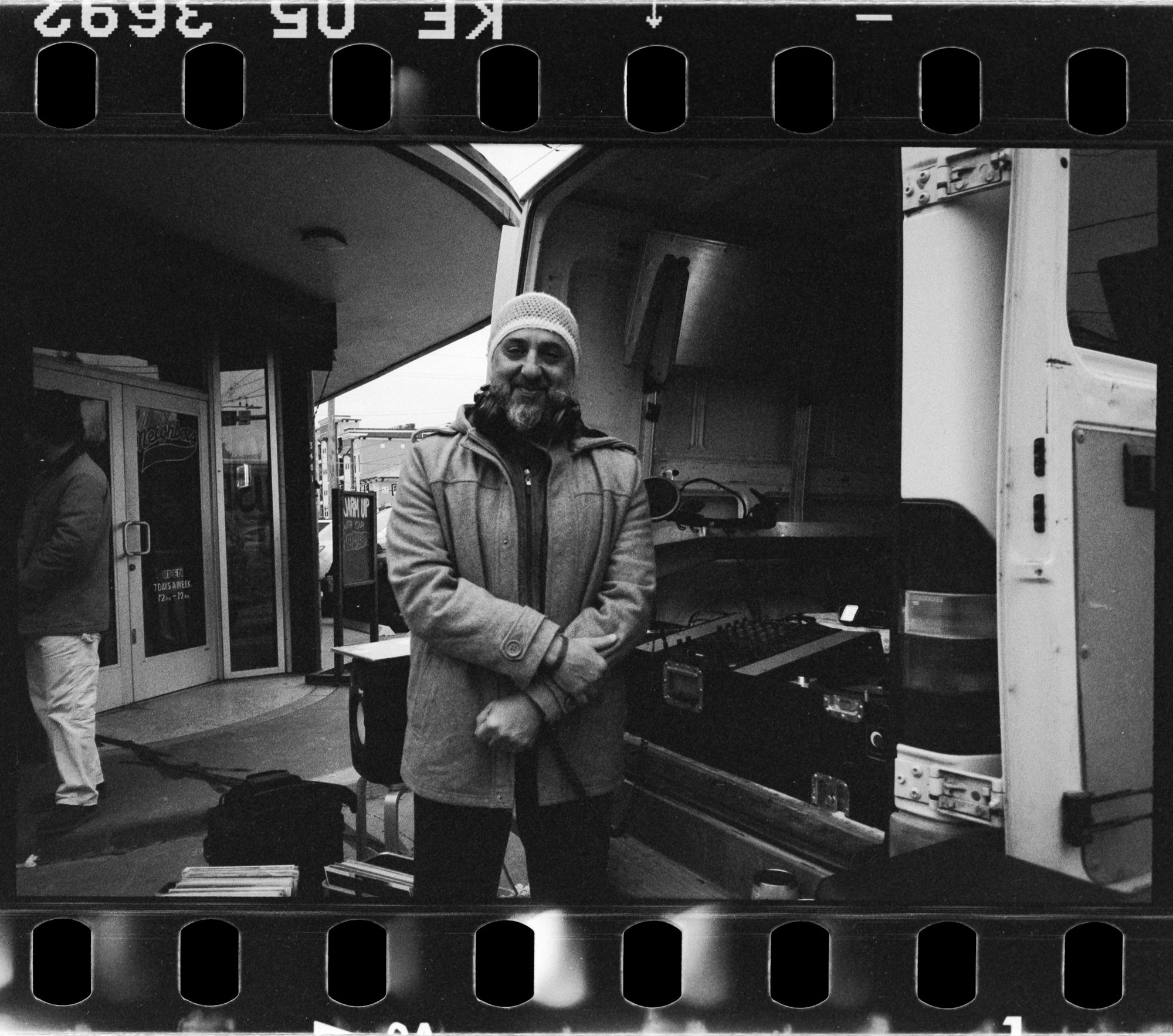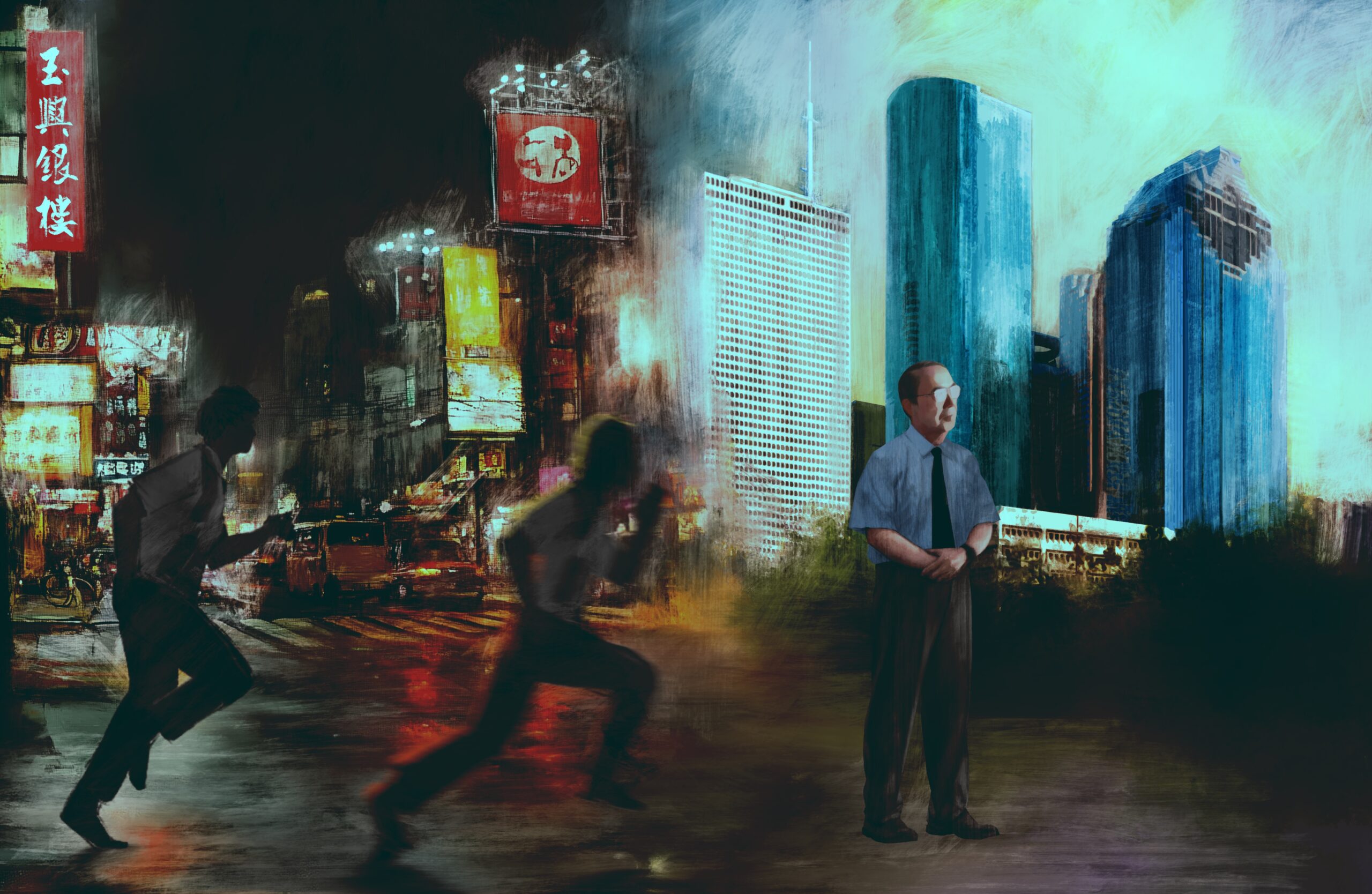Ashlee Watts, a veterinary equine surgeon and Texas A&M University faculty member, referred to the draft horse she was treating as “Maggot Draft.”
The mare’s real name was Allie, and she belonged to Houston police officer Scott Berry. In December 2019, a bug-infested wound on Allie’s hind hoof refused to heal. Her regular veterinarian broached euthanasia, but Berry didn’t want to quit and brought the horse to A&M’s Large Animal Teaching Hospital in College Station.
“Her odds going in were not necessarily in our favor,” Berry told the Texas Observer, “but there was still a chance, which is why we took it.” As he has said, the horse was “no different than any other member of the family.”
Allie’s surgery went well, but her recovery did not. When the mare would not rise on her own following a large dose of anesthesia—imperative because if horses don’t stand, they can develop circulatory problems and die—Watts, her surgeon, fetched a cattle prod, a device rarely used on horses that delivers several thousand volts of electric shock.
Video of the incident shows the doctor poking Allie more than 1,000 times with what is commonly referred to as “a hot shot.” A shock wasn’t administered each time the veterinarian touched the horse, records indicate, but a witness later described the hum of electricity buzzing through the stall, the mare’s frantic grunts and wails, and the pops when Allie’s flesh—and her eyes, ear canal, and vulva—were prodded.
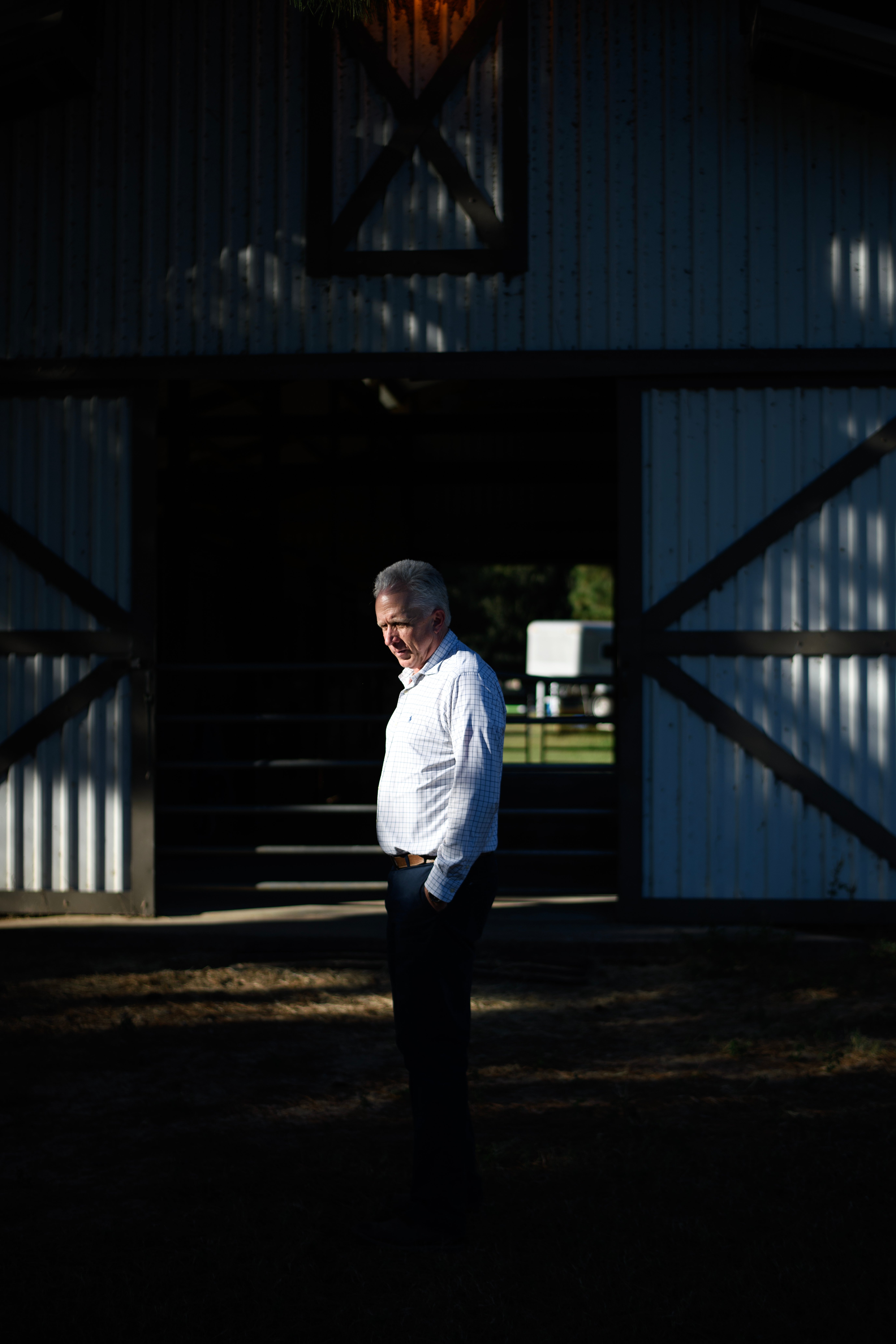
Several veterinary students, including Michael Vallon, were observing Watts during that pre-Christmas week. Per Vallon’s testimony in a subsequent disciplinary hearing over Watts’ actions, observers stared at their feet or paced the hallway as the tenor of Allie’s anguish grew louder. He said that Watts didn’t explain what she was doing, and no one tried to stop her.
Eventually, Watts ceased what she later described as efforts to save the horse’s life. About an hour later, Allie died. In the final medical report Berry received on December 22, the veterinarian didn’t mention the electrified prod. Instead, she wrote: “We are very sorry for your loss of Allie! She was a lovely mare. We did our absolute best to save her.”
Two months later, an investigator with the Texas Board of Veterinary Medical Examiners, which reviews complaints made against veterinarians including claims of substandard care or other misconduct, broke the news to Berry about the details of his horse’s final hours. Concerned that A&M would not take any internal disciplinary action, a veterinary technician had downloaded the video captured in Allie’s stall and delivered it to the board, which then launched what would be its second investigation of Watts.
In 2016, another Houstonian, Heather Kutyba, had filed a complaint with the board and later, in 2017, sued Watts and A&M, alleging the surgeon fatally harmed her 5-month-old filly, Dazzle. But the board initially dismissed her complaint, and her legal battle faced long odds in civil court, challenges that illustrate how veterinarians are shielded from significant liability under Texas laws.
Randy Turner, a Fort Worth-based animal law expert, explained that Texas law considers animals property. Four-legged family members—unless they are purebred racehorses—have little legal value. A soft but stubborn housecat or a loyal mutt, for example, would maybe fetch $10 in court. “The most you can sue for is the … market value” for selling the animal, Turner said. “There’s really no legal incentive for [a veterinarian] to be careful.”
A state-employed veterinarian has even more protection. Suing a state institution over the death of a pet, Turner added, is pointless. “Under the Texas Tort Claims Act,” Turner said, “a governmental entity is not liable for damaged or destroyed property … unless it arose out of the use of a motor vehicle.”
But shocking a suffering horse, and so many times? Watts had crossed a line and would, in time, be held accountable. The state veterinary board (four of seven current members are A&M alums) would take action after an investigation and years of legal proceedings. The local district attorney in Brazos County also got involved, looking into possible charges against a faculty member of one of the county’s most revered institutions.
The questions that now lingered: After avoiding consequences in the past, would Watts lose her license or be convicted of a crime?
A lifelong horsewoman, Watts earned a Doctor of Veterinary Medicine degree at Colorado State University in 2003. She then completed a Ph.D. at Cornell University. There, she acquired a rare set of equine surgery skills while developing an interest in regenerative medicine, the promising frontier of healthcare that suggests stem cells might cure chronic injuries and other medical conditions.
Watts spent five years as a resident surgeon at Cornell, where she later claimed she learned about the therapeutic use of hot shots on horses. Indeed, Watts also claimed that, prior to the incident with Allie, she’d used the technique to save the life of another horse, court records show.
Watts joined Texas A&M in 2012, earning tenure in 2018. When she was hired, Watts’ job-offer letter predicted her role would grow primarily into lab work. “We believe you have the potential to do great things,” her former boss Allen Roussel wrote. “We hold high expectations for your academic performance.” Those expectations, he noted, included bringing research grant money to the university.
Watts succeeded on the research front, becoming an associate editor of the Frontiers in Veterinary Science journal and research chair of the Veterinary Orthopedic Society. She authored at least 41 peer-reviewed studies, most in regenerative medicine. Watts also brought large grants to Texas A&M, including a $60,851 stem cell project awarded by the American Quarter Horse Association in 2020.
Her star was on the rise when her path collided with that of Kutyba and Dazzle. Kutyba and Watts shared a love of horses. Watts had been crowned a reserve world champion in amateur horsemanship by the quarter horse group, the same organization that would fund her research, and won multiple championships in United States Dressage Federation events. Kutyba had been taking horses she’d raised to A&M for more than 20 years.
In August 2015, Kutyba sought treatment for Dazzle’s mild lameness, for which Watts put unconventional shoes on the young paint horse. When these failed to help, Kutyba brought the animal back to have them removed, though Watts refused to do so. That seemingly routine visit stretched into nine days of hospitalization. When she came to visit, Kutyba said she found Dazzle hardly able to stand. “She had a tragic look on her face” and had lost 36 pounds—around 10 percent of her body weight.
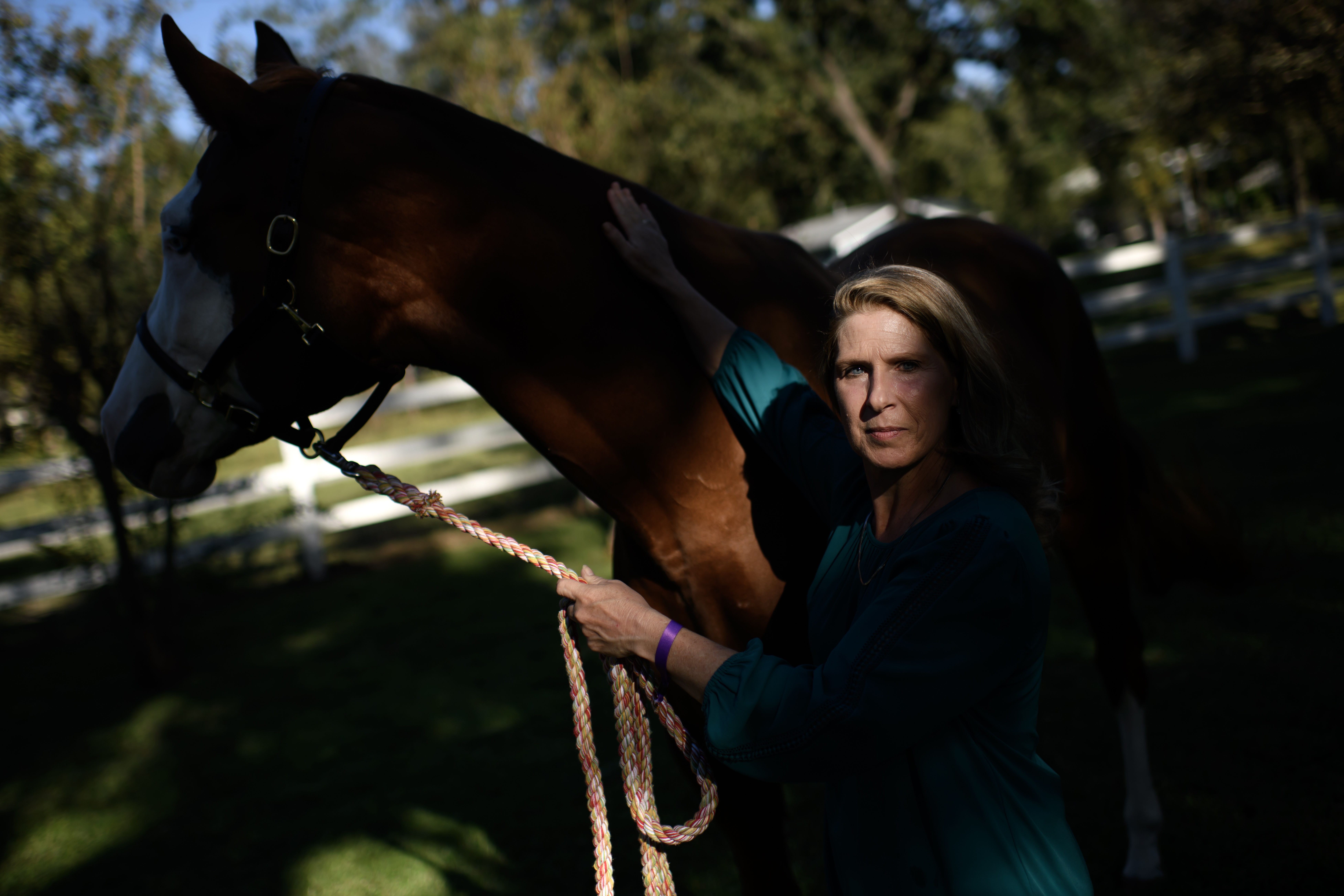
Dazzle was later diagnosed with a mysterious pelvic fracture, something the owner believes could only have occurred during her stay at A&M. The horse was discharged, but her health problems continued. Even with $3,000 a month in medications, the filly failed to recover. Dazzle couldn’t say what had happened, of course, but Kutyba told the Observer she believed Watts had done something wrong. “I brought in a perfectly healthy filly, who was returned to me critically injured, without explanation.”
Seventeen months later, prolonging the inevitable felt cruel. On a freezing February morning, Kutyba summoned another veterinarian. Moments before the needle prick that would end Dazzle’s life, her owner cradled the horse’s head and leaned in close. “I’m gonna get her,” she recalls whispering.
Kutyba had also complained to A&M and requested video footage of Dazzle’s stall. Her request was denied. The veterinary board dismissed her complaint against Watts.
So Kutyba then decided to sue Watts and A&M in civil court. Most attorneys she contacted told her that even in the unlikely event she won a malpractice case against a state-employed veterinarian, the financial payoff wouldn’t be enough to compensate them for their time. Finally, Kutyba found willing attorneys and, in August 2017, filed a lawsuit in Brazos County against Watts and A&M anyway. She had started to believe that no one was protecting the animals under Watts’ care and that the responsibility fell to her. “There was value in fighting the fight,” she said, “to ensure that this was documented.”
The Texas Attorney General’s Office defended both the university and Watts—at taxpayer expense. What Watts did to Dazzle didn’t matter thanks to Texas tort law, attorneys argued, meaning state-employed veterinarians could not be held responsible for medical negligence because animals are merely property.
Brazos County District Judge Steven Smith dismissed the case but lambasted A&M over its legal stance, according to a transcript: “Especially in our community, where there is a facility that treats every kind of animal imaginable, the state would argue that if you want to be the worst veterinarian and never have any reason to worry about your liability, come work for us. That’s what this invites.”
Less than two years later, leaders at the Texas A&M College of Veterinary Medicine and Biomedical Sciences fielded another complaint about Watts. The day Allie died, a hospital employee anonymously filed an ethics complaint about the use of the cattle prod.
Internally, A&M launched an investigation led by Susan Eades, another faculty equine veterinarian and Watts’ supervisor at the time. Eades emailed the findings of three A&M veterinarians to then-Dean Eleanor Green in February 2020. The investigating committee had determined several hundred electric shocks to a horse constituted “bad judgment,” Eades wrote. Yet it found: “She did not treat the horse out of rage or abuse but to provide every opportunity for the horse to survive.”
Still, the communication noted: “Dr. Watts has placed herself and the University in a difficult situation if this video is released.” At the conclusion of the email, Eades recommended that Watts be dinged with an “unsatisfactory in patient care and a needs improvement in teaching” in her next evaluation report.
Later, Eades claimed that she was told by Dean Green not to go through with that recommendation and instead gave Watts a raise, according to her testimony in a subsequent state review of Watts’ actions. (Green later rebutted that, saying department heads do evaluations and recommend raises. “I do not give her anything; her department head does.”)
“That is something I do regret daily.”
Veterinary technician Julie Baker, who had been on duty when Allie was in recovery but not during the hot-shotting, later expressed her frustration, according to state records, recalling that “We were told that nothing was going to be done.”
So Baker downloaded the video of what had happened to Allie and delivered it to the veterinary board. She testified that, otherwise, she feared the recording would disappear because of “previous episodes where evidence just likes to get buried.”
Baker testified during proceedings before the State Office of Administrative Hearings (SOAH), “A&M just likes to cover things up and smooth it all over.”
In a response to a question about allegations of how Texas A&M handled such videos from the Observer, John August, current dean of the veterinary school, wrote that “This footage has never been saved nor is the video a part of the animal’s permanent medical record. … When video is recorded in a stall, the camera system records over the content as needed.”
The veterinary board started digging. Staff investigators interviewed Berry and other witnesses in early 2020. The board’s executive disciplinary committee convened to consider the matter, and in November 2021 the board committee issued an emergency order to temporarily suspend Watts’ license. Claiming the veterinarian had violated formal rules of professional conduct, board member Keith Pardue wrote that her “continued practice of veterinary medicine constitutes a continuing of [sic] imminent threat to the public welfare.”
The board then sought an agreed order for permanent revocation of her license, but Watts objected, which prompted a review by administrative law judges with SOAH. In March 2022, Jerry Bergman, an assistant attorney general, submitted the board’s petition to SOAH seeking to revoke the license, arguing Watts had “failed to meet the standard of care, performed unnecessary treatment and violated board rules while providing post-surgical care.”
Don Ferrill, a Fort Worth attorney and veterinarian, defended Watts during a live-streamed three-day administrative hearing in February 2023. This time, lawyers from the attorney general’s office were representing the veterinary board and arguing that Watts’ actions justified revoking her license. Berry and several witnesses from the teaching hospital testified about the nightmare of Allie’s last hours.
Ferrill, Watts’ attorney, argued that there was no established standard of care in veterinary medicine for using a hot shot on horses and that Watts, an equine specialist, used her best judgment. Watts herself was present for the duration, but by then she was also facing a related animal cruelty charge in Brazos County and declined to testify in her own defense, invoking the Fifth Amendment.
Witnesses, including Baker, described how Allie failed to stand from 4 p.m. on December 18 through the following morning.
Mid-morning on December 19, according to Vallon, Watts arrived and ordered vet students to wrap a sling around the horse to help her stand. In the SOAH hearing, state attorneys cued this moment up in the video of the incident. Right when Allie, wearing a protective mask commonly used post-surgery, was heaved a few inches off the ground, Watts arrived with the cattle prod.
Vallon testified that he had been working in the veterinary world since he was a teen. He told the judges that until that day, he had only once seen a hot shot used on a horse—to urge it to stand so it could be moved and safely euthanized. His A&M veterinary professors had never given instructions on using the device at all.

In arguing that Watts had failed to meet a professional standard of care, state attorneys cited Colorado State University animal science expert Temple Grandin, who wrote in 2022 in a post on her website that, even for beef cattle, “Electric prods should be replaced as much as possible with alternative driving aids. … An electric prod should not be a person’s primary driving tool. It should only be picked up and used when absolutely required to move a stubborn animal and then put back down.”
Vallon testified that Allie “immediately began violently thrashing” as the current ripped through her. Attorneys again showed clips of the soundless video, which showed Watts shoving the slightly bendable prod into Allie’s flank, under her mask, and on sensitive body areas including her anus. Suspended six inches above wood shavings on the stall’s floor, Allie spiraled and jerked. She reached back to bite the prod and ultimately buried her face in the shavings.
Vallon testified that the pained sounds Allie was making were “difficult to describe.” Asked again, he offered “guttural wail. … I’m not sure I’ve ever heard anything like it.”
The video showed how Watts hot-shotted Allie for 14 minutes. She took a break for eight minutes. Then, Watts claimed in written answers submitted prior to the hearing, she called Berry, who still didn’t want to let the horse die. She returned and employed the device for 10 more minutes. By the end, Vallon said, Allie’s breathing was shallow, and she was trembling. She never did stand.
During the hearing, Berry disagreed with the medical records Watts had submitted after Allie’s death in which she claimed she spoke with him about using the cattle prod on his horse. “There was no discussion with me about using the hot shot … of any kind.”
Ninety minutes later, Allie was dead. The final medical report, dissected repeatedly during the hearing, didn’t mention what state attorneys said were “more than 1,000 prods with this hot shot, both dry and live.” Watts’ written medical summary was brief: “[Allie] was frequently sitting up to sternal recumbency to eat and laying back on her side. She developed what was possibly seizures and died.”
Ferrill has described both Vallon and Baker as unqualified to provide an opinion about the quality of care Watts provided. He dismissed Vallon in part because he’d been only a student at the time. He also strongly challenged Baker during the hearing. “You’re not a veterinarian. And so you wouldn’t necessarily know, right?” He told the SOAH judges that Watts is “probably one of the preeminent equine veterinarians in the state of Texas and in the nation.”
Both Ferrill and Alyssa Doering, Watts’ surgical resident, defended the decision to repeatedly hot-shot Allie. Saving the horse was Watts’ professional duty, they said—an ugly task that a non-veterinarian wouldn’t understand.
Ben Buchanan, himself a proud A&M veterinary alum who testified as an expert witness for the state, told the judges that he once professed he would never testify against a fellow veterinarian, but, in this case, he felt a faculty member had not met the professional standard of care. “This particular case I thought was egregious,” he testified—especially because it happened in the context “of the education and teaching of future veterinarians.”
Meanwhile, a whistleblower had already given the Brazos County District Attorney a copy of the video of Allie enduring the hot shots. (In a later court filing, Ferrill would accuse the veterinary board of leaking “privileged” information in order to influence the grand jury.)
A grand jury reviewed the evidence and indicted Watts on one count of felony animal cruelty in October 2021. The indictment claims Watts did “intentionally and knowingly torture a livestock animal.” The maximum penalty is a $10,000 fine and up to two years in state jail.
Judge Smith, the same jurist who had lectured A&M attorneys for the legal arguments in Kutyba’s civil case, signed a warrant for Watts’ arrest. A few days later, Watts turned herself in and posted a $10,000 bond.
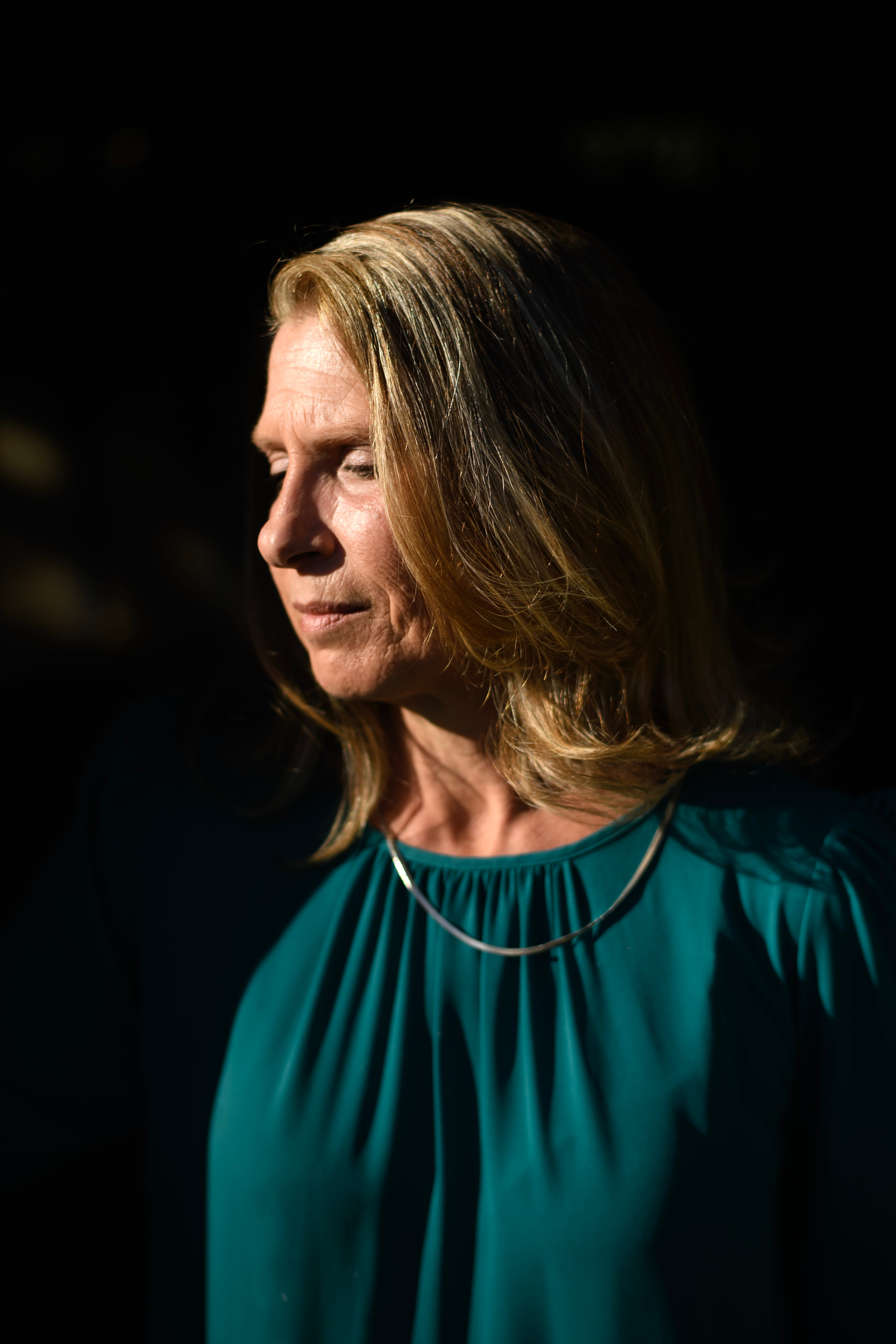
The transformation from state employee with no civil liability to potential felon is an anomaly in the veterinary world.
JohnAugust, who became dean of the Texas A&M College of Veterinary Medicine in September 2020, suspended Watts from her faculty and clinical positions, with pay, in November 2021. After the indictment, the university launched a separate probe into Watts’ research ethics.
Watts’ longtime colleague, Wesley Bissett, convened an emergency faculty meeting in October 2021 to discuss and investigate the implications for her ongoing stem cell research. According to a report Bissett later wrote, Watts had been treating 272 horses with experimental stem cells “on a for-fee basis.” After consulting with a representative of the U.S. Food and Drug Administration (FDA), Bissett raised an immediate concern: “The use of stem cell therapies for clinical purposes requires that the product be permitted by the FDA,” he wrote. A problem, because “There are not currently any FDA-approved cell-based products for animal use.”
Bissett’s subsequent investigation took only months. What Watts did to Allie was “questionable,” he wrote in a March 2022 letter to A&M’s vice president for faculty affairs. But her flawed research protocols were grounds for dismissal, he wrote. In the final investigation report, submitted in April 2022, Bissett wrote that Watts never sought the required permissions for 257 of the 272 horses she was treating with experimental stem cells; the horses’ owners were not properly informed about the treatment and its uncertain side effects or were not fully aware of the risks.
In addition, Bissett wrote, Watts was making and distributing experimental stem cell therapies “to clinical faculty members working in the [Texas A&M] Veterinary Medical Teaching Hospital and to private-practice veterinarians in Texas and California” for them to treat animals with. Bissett argued that this violated FDA rules, writing that the activity “was not performed under the regulations and guidelines established by the FDA and represents an unapproved manufacturing and distribution of a pharmaceutical.”
In October 2022, Watts was allowed to resign from A&M and given $50,000 in severance pay.
Records show that A&M reimbursed 171 clients of Watts’ regenerative medicine lab a total of $357,462.57.
August, the current dean, said in an email response to questions that those clients received reimbursements because the lab closed when Watts departed. “The owners of participating animals [in Watts’ stem cell trial] covered a portion of their animals’ care during the trial. … Owners were reimbursed for the payments made for their horses’ therapy, as the treatments had not been completed.”
In August 2023, the SOAH judges issued a ruling in the matter of Watts’ license. They wrote that her actions were “extreme, cruel and potentially felonious.” But, because no previous complaints against her had been upheld, they recommended against permanently revoking her license, instead suggesting that the state impose a five-year suspension and $15,000 fine.
In response, board members decided to reconsider the older complaint they’d dismissed against Watts involving Kutyba and Dazzle. Initially, they’d given “great weight” to a written statement from Watts, considering her duty to be truthful and her “status as an associate professor of a highly respected veterinarian school,” when dismissing that complaint. Now, the board—which holds the power to accept or reject SOAH recommendations—decided to revive the Dazzle case in light of the new information about Watts’ behavior with the hot shot. Given both complaints, the board voted unanimously in March 2024 to permanently revoke Watts’ license and fine her $15,000.
In August 2024, Watts appealed the veterinary board’s decision by filing a civil lawsuit in Travis County district court, arguing the board violated normal procedures and the Texas Open Meetings Act by deliberating on her revocation in executive session and failing to provide her attorney with an opportunity to question Dazzle’s owner.
Turner, the animal rights attorney, told the Observer he was glad to see the board seeming to finally take stronger action. He’d expressed frustration with the board’s prior decisions to avoid revoking licenses in other high-profile cases. Fort Worth veterinarian Lou Tierce, caught using supposedly euthanized dogs as captive blood donors, and Austin vet Kristen Lindsey, who shot a cat with a bow and arrow, each had their licenses merely suspended for five years, according to veterinary board orders.
The board’s executive director, Brittany Sharkey, did not agree to an interview but responded to questions via an email. “I’ve been proud that the [Texas Board of Veterinary Medical Examiners] staff has embraced the opportunity to become the best possible version of ourselves by learning new processes and redoubling our efforts to provide the best possible services to our licensees and consumers,” she wrote.
“We are a complaint-driven agency. We can only investigate what is brought to our attention. We rely on the public to be our partners in this and let us know when an issue arises so that we can properly investigate.”
Texas A&M’s College of Veterinary Medicine does not offer a formal required course in ethics. Students are expected to learn about this essential component of professional practice through units in other courses and observing their faculty mentors.
August, the current dean, noted that all veterinarians take oaths and are required to respond to questions about Rules of Professional Conduct as part of veterinary licensing. “Recognizing that ethics are fundamental to animal care, Texas A&M integrates training in veterinary ethics throughout the four years of the Doctor of Veterinary Medicine (DVM) curriculum, including the Professional & Clinical Skills courses. This comprehensive approach equips students to navigate ethical challenges effectively as they enter the profession.”
In an email to the Observer, Anne Quain, a senior lecturer in professional practice at the Sydney School of Veterinary Science in Australia, said that A&M is not alone in failing to offer an ethics course. Quain’s Ph.D. research centered on veterinary ethics, and she runs confidential groups in which veterinarians discuss ethical challenges. “Veterinary curricula worldwide are very full, there is a lot of technical detail to cover,” she wrote, “so professional skills such as ethics and communication are often perceived to be relatively undertaught.”

This is a mistake, she continued: “We know that ethical challenges are a source of a particular kind of stress called moral stress, moral distress, and even moral injury.”
A 2019 study published by the American Veterinary Medical Association revealed that U.S. veterinarians are 1.6 to 2.4 times more likely to die by suicide than the general U.S. population. The most common cause of suicidal death for veterinarians is poisoning by Pentobarbital, a common euthanasia drug that is also a psychoactive barbituate sometimes used recreationally; it has a high potential for addiction.
Veterinary faculty members are often asked to balance treating animals, teaching classes, and conducting research. In addition, they have an extra imperative to model ethical behavior for students, Quain said. “Actions speak louder than words. What faculty say is one thing, but if what they do is different, it is what they do that students tend to remember.”
Vallon, Watts’ former student, has testified that he still remembers the pain of choices that can’t be undone, ones that weren’t his to make in the first place. Asked during the SOAH hearing about whether he should have ripped the cattle prod out of Watts’ hands, he took a long breath and said: “I regret not doing that. And I think if I’d have gone in there, I probably would have had to do it. And I’d probably get the cops called on me for assault or something, and I probably would have been packing my bags to find a new career.”
Still, he said, “That is something I do regret daily.”
Vallon, now a mixed animal veterinarian, was the first expert witness called to testify at Watts’ criminal trial, which began on September 16 in Bryan. He showed back up in the courtroom to listen to the rest of the testimony over six days in which veterinary experts disagreed about whether hot-shotting a horse was common practice.
In an email, Watts’ criminal defense attorney Jim James said she deserved to share her side. “She was trying desperately to save the life of a horse in an emergency situation.”
Jurors didn’t buy it. On October 2, over an hour that included a court-provided lunch, they unanimously found Ashlee Watts guilty of felony animal cruelty. Her first sentencing hearing is December 6. In response to the Observer’s request for comment, James said: “Obviously, we are disappointed by the jury’s verdict but respect the process. As this case is ongoing, it would not be ethical for me to add anything else at this time.”
After the trial, Berry said the verdict provided some closure, though he and his family would never fully recover from learning of the trauma Allie endured. He marveled that Watts’ defense strategy was attempting to normalize extreme use of the hot shot. Watts “may still believe that this, what she was doing, was okay,” he said. “Twelve jurors felt that was not the case.”
Disclosure: Caroline Collier, prior to reporting this story, sought treatment for her cat, Dash, at Texas A&M University’s Small Animal Teaching Hospital, and he died there. She never met any large animal veterinarian in that process, nor has she filed any complaint.
